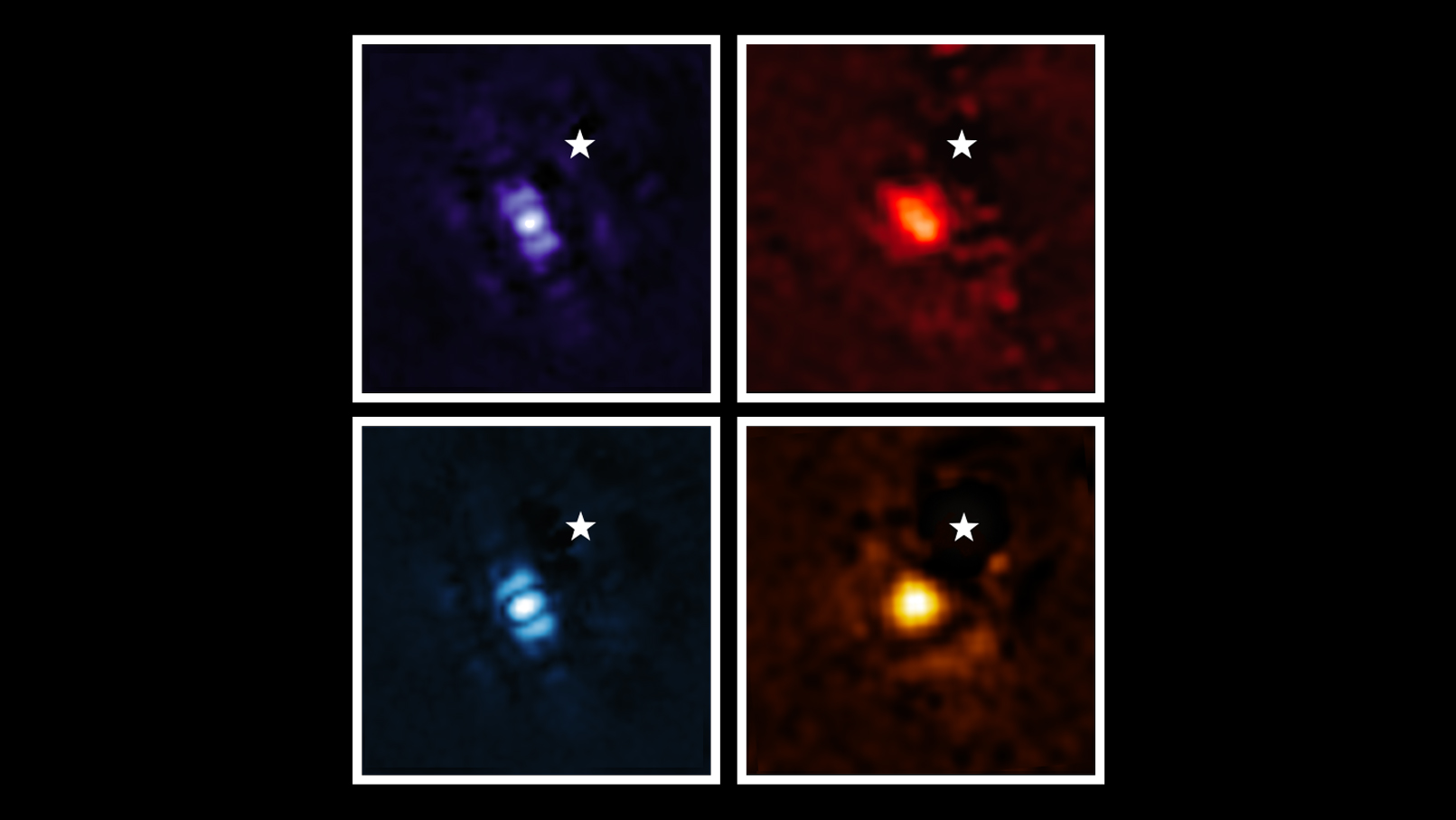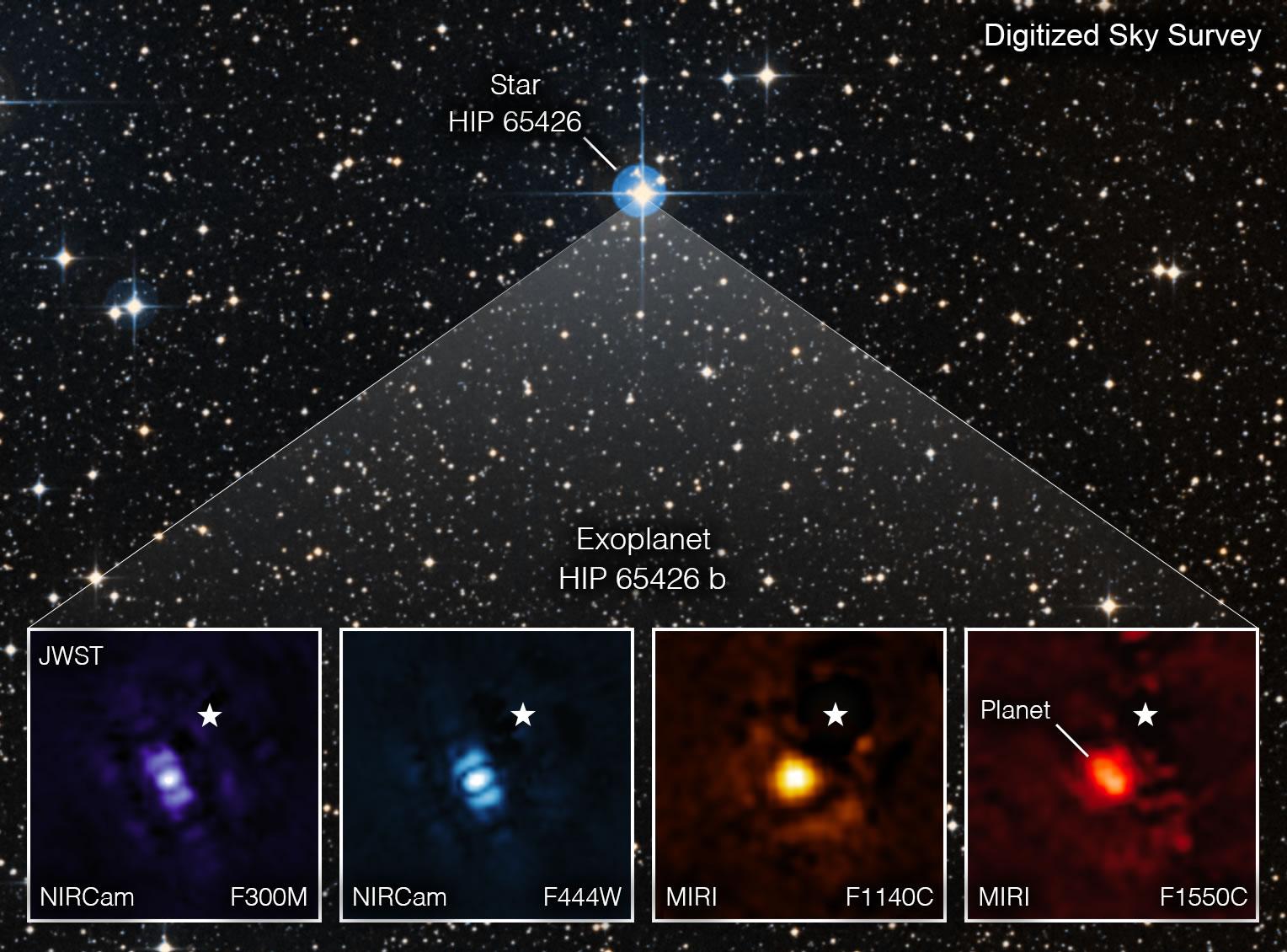Far out! James Webb Space Telescope takes first EVER image of planet outside solar system
NASA amazes the world once again, as its Webb Space Telescope takes the first direct image of a distant world

Forget consumer cameras and smartphone photography – NASA's James Webb Space Telescope is one of the most exciting imaging devices of our time. It has and will continue to deliver views of places and planets that we will never be able to visit, and phenomena that are hard to imagine.
Although the live launch of the James Webb Space Telescope was only a few months ago, we've already seen some groundbreaking and breathtakingly beautiful pictures. Now for the first time ever, astronomers have been able to use the telescope to capture an image of a planet outside our solar system.
The inhabitable planet pictured is a gas giant with no solid surface, and it was seen by the telescope through four different light filters. According to the official NASA release, Webb’s powerful infrared gaze "can easily capture worlds beyond our solar system, pointing the way to future observations that will reveal more information than ever before about exoplanets."
How was the exoplanet "image" created?
The wonderful thing about NASA is that it shares its findings with the world, and with that, broadens our understanding of physics and space, giving us inspiration and a true inspiration for the universe that we live in. The visual below is what NASA has shared, and it shows us that the exoplanet HIP 65426 b (catchy name) image is actually made up of four separate camera views – the NIRCam instrument’s view at different measurements of micrometers.
"These images look different because of the ways the different Webb instruments capture light. A set of masks within each instrument, called a coronagraph, blocks out the host star’s light so that the planet can be seen. The small white star in each image marks the location of the host star HIP 65426, which has been subtracted using the coronagraphs and image processing. The bar shapes in the NIRCam images are artifacts of the telescope’s optics, not objects in the scene."

Talk about out of this world! This is Webb’s first direct image of a planet outside of our solar system, and it hints at Webb’s future possibilities for studying distant worlds: https://t.co/ITcl6RItLaNot what you expected? Let’s walk through the details👇 pic.twitter.com/bCgzW0dcUESeptember 1, 2022
The team who created the image
We can't forget that behind this unbelievably powerful telescope lies decades of research, preparation and the work of hundreds of scientists. Aarynn Carter is a postdoctoral researcher at the University of California, Santa Cruz, and he led the analysis of these images.
“Obtaining this image felt like digging for space treasure,” says Carter. “At first all I could see was light from the star, but with careful image processing, I was able to remove that light and uncover the planet. I think what’s most exciting is that we’ve only just begun. There are many more images of exoplanets to come that will shape our overall understanding of their physics, chemistry, and formation. We may even discover previously unknown planets, too.”
The best camera deals, reviews, product advice, and unmissable photography news, direct to your inbox!
While they won't help you to see planets outside the solar system, the best telescopes are excellent tools for observing the night sky, while the best camera for astrophotography can help you to capture it.

Lauren is a writer, reviewer, and photographer with ten years of experience in the camera industry. She's the former Managing Editor of Digital Camera World, and previously served as Editor of Digital Photographer magazine, Technique editor for PhotoPlus: The Canon Magazine, and Deputy Editor of our sister publication, Digital Camera Magazine. An experienced journalist and freelance photographer, Lauren also has bylines at Tech Radar, Space.com, Canon Europe, PCGamesN, T3, Stuff, and British Airways' in-flight magazine. When she's not testing gear for DCW, she's probably in the kitchen testing yet another new curry recipe or walking in the Cotswolds with her Flat-coated Retriever.
